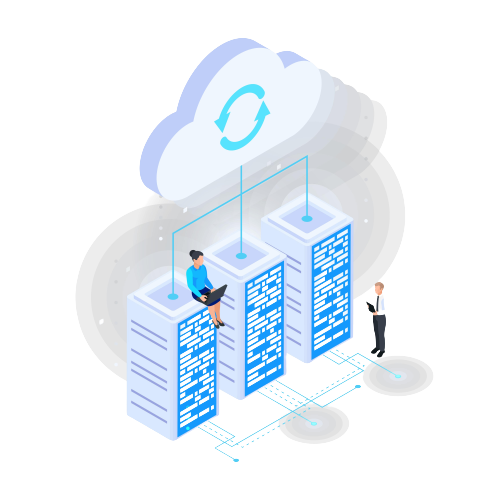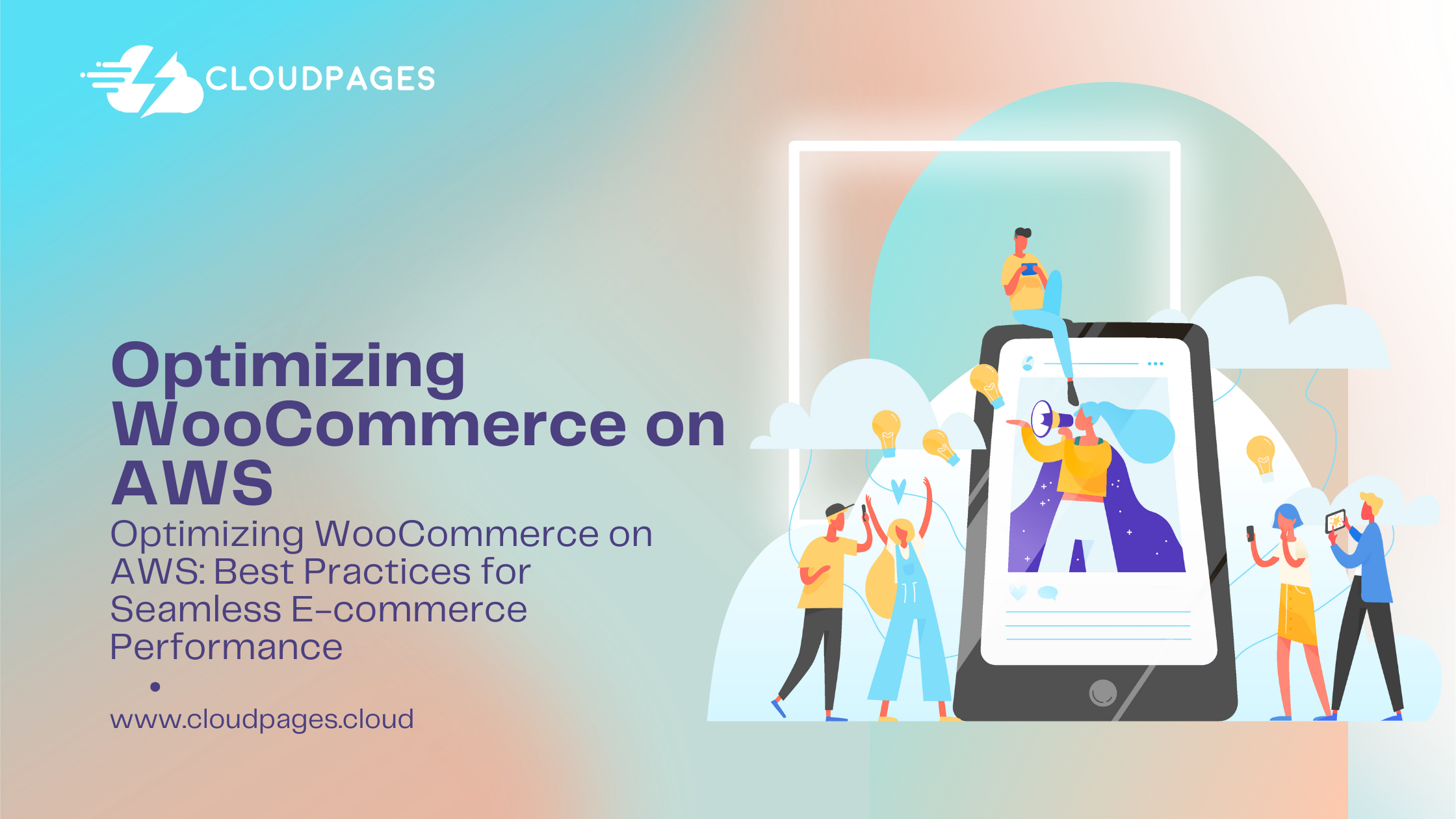
WooCommerce, the popular WordPress plugin, has emerged as a go-to solution for businesses seeking to establish a robust online presence. To ensure optimal performance and scalability, hosting WooCommerce AWS has become a preferred choice for many e-commerce entrepreneurs. In this article, we’ll delve into the best practices for leveraging AWS to enhance the performance of your WooCommerce store.
Table of Contents
Choose the Right AWS Instance Type
Selecting an appropriate AWS instance type is the cornerstone of optimizing your WooCommerce store. For efficient performance, consider instances with ample CPU and memory resources. AWS provides a variety of instances, such as the Compute-Optimized and Memory-Optimized families, allowing you to tailor your choice based on the specific requirements of your online store.
Utilize Amazon RDS for Database Management
The database is a critical component of any e-commerce platform, and WooCommerce heavily relies on it for product information, orders, and customer data. Leveraging Amazon RDS (Relational Database Service) for WooCommerce databases ensures high availability, automatic backups, and seamless scalability. Use Amazon Aurora for MySQL compatibility to enhance database performance and achieve low-latency responses for your online store. To further optimize your understanding and management of AWS services like Amazon RDS and Aurora, consider enrolling in an AWS course tailored to e-commerce needs.
Implement Content Delivery Network (CDN) for Enhanced Speed
Speed is paramount in e-commerce, and a Content Delivery Network (CDN) can significantly boost the loading times of your WooCommerce store. AWS offers Amazon CloudFront, a global CDN service that caches content closer to your users, reducing latency and improving the overall user experience. Integrate CloudFront with your WooCommerce store to deliver static content, such as images and stylesheets, at lightning-fast speeds.
Utilize Amazon S3 for Media Storage
Efficient media management is crucial for any e-commerce site. Amazon S3 (Simple Storage Service) provides a scalable and cost-effective solution for storing and retrieving images, videos, and other media files. Integrate Amazon S3 with your WooCommerce store to offload the server and enhance the delivery of media assets to end-users.
Enable Auto Scaling for Variable Workloads
E-commerce websites often experience fluctuations in traffic, especially during sales events or promotional campaigns. Leveraging AWS Auto Scaling ensures that your WooCommerce site (WooCommerce theme) can handle varying workloads by automatically adjusting the number of instances based on demand. This prevents performance bottlenecks during peak times and optimizes costs during periods of lower traffic.
Secure Your WooCommerce Store with AWS Security Measures
Security is a top priority for any online business, and AWS provides a robust set of tools to safeguard your WooCommerce store. Implement AWS Identity and Access Management (IAM) to manage user access and permissions. Additionally, deploy AWS Web Application Firewall (WAF) to protect your store from common web exploits and secure sensitive data with AWS Key Management Service (KMS).
Regularly Monitor and Optimize Performance
Continuous monitoring is essential to identify potential bottlenecks and optimize the performance of your WooCommerce store on AWS. Utilize AWS CloudWatch to monitor key metrics such as CPU utilization, network activity, and database performance. Implement automated scaling policies to dynamically adjust resources based on real-time data, ensuring optimal performance under varying conditions.
Horizontal vs. Vertical Scaling in AWS: Choosing the Right Path for Your Business Growth

Horizontal Scaling: Scaling Out
Horizontal scaling, also known as scaling out, involves adding more instances to your existing infrastructure to distribute the load. In the context of AWS, this means increasing the number of servers or instances in your application tier. Horizontal scaling is well-suited for distributed and stateless applications that can efficiently operate across multiple servers.
One of the main advantages of horizontal scaling is improved reliability. By distributing the load across multiple instances, you reduce the risk of a single point of failure impacting your entire system. Additionally, horizontal scaling facilitates handling increased user traffic during peak periods, making it a preferred choice for applications with varying workloads.
AWS provides services like Auto Scaling, which enables automated horizontal scaling based on predefined policies. Auto Scaling dynamically adjusts the number of instances to maintain performance, ensuring optimal resource utilization and cost efficiency.
Vertical Scaling: Scaling Up
Contrary to horizontal scaling, vertical scaling, or scaling up, involves increasing the resources (CPU, RAM, storage) of a single server or instance to handle increased demand. This approach is suitable for applications that may not be easily distributed across multiple servers or when immediate performance improvement is needed.
Vertical scaling is often used for applications with stateful components that rely on a single, powerful server. AWS offers various instance types that cater to different resource needs, allowing you to vertically scale based on your application’s requirements. However, there is a limit to how much you can vertically scale, and at some point, you may encounter hardware limitations.
| Criteria | Horizontal Scaling | Vertical Scaling |
|---|---|---|
| Definition | Adding more instances to distribute the load across servers. | Increasing resources (CPU, RAM, storage) of a single server. |
| Application Suitability | Ideal for stateless, easily distributable applications. | Suitable for stateful applications or when immediate performance improvement is needed. |
| Failure Impact | Reduced risk of a single point of failure; improved reliability. | Higher risk of a single point of failure; less distributed. |
| Handling Increased Load | Scales well with varying workloads; suitable for peak traffic. | May have limitations on immediate scalability due to hardware constraints. |
| Cost Efficiency | Generally more cost-effective; resources can be added incrementally. | May involve higher upfront costs for more powerful instances. |
| Flexibility and Agility | Greater flexibility and agility; adapts well to changing workloads. | Less dynamic; scalability is constrained by the capacity of a single instance. |
| Application Architecture | Aligns well with modern microservices architectures. | Better suited for applications with components that rely on a single, powerful server. |
| AWS Services | Auto Scaling is a key service for automated horizontal scaling. | AWS offers various instance types for vertical scaling based on resource needs. |
| Immediate Performance Gain | Immediate performance gains are achievable by adding more instances. | Offers a quicker solution for immediate performance improvement. |
| Scalability Limitations | Scalability is limited by the capacity of individual instances. | There is a limit to how much you can vertically scale before hitting hardware limitations. |
Secure Payment Transactions with AWS Key Management Service (KMS)
Securing customer data and payment transactions is a top priority for any e-commerce business. Utilize AWS Key Management Service (KMS) to encrypt sensitive data, ensuring that payment information and other critical details are stored securely. Implement HTTPS for your website using AWS Certificate Manager to encrypt data in transit, providing a secure and trustworthy shopping experience for your customers.
Implementing Content Compression and Optimization
Enhance the delivery of your website’s content by implementing compression and optimization techniques. Amazon CloudFront supports content compression, reducing the size of files transferred between the server and end-users. Additionally, optimize images and other media assets to minimize loading times. Services like AWS Elemental MediaConvert can automate the process of encoding and compressing media files, further improving the overall performance of your WooCommerce store.
FAQs – WooCommerce AWS
What is the significance of hosting WooCommerce on AWS for e-commerce performance?
Hosting WooCommerce on AWS provides a scalable and reliable infrastructure, allowing businesses to optimize their online stores for seamless performance. AWS offers a range of services and tools tailored for e-commerce, ensuring flexibility, security, and efficient handling of varying workloads.
What AWS services can be used for effective caching in WooCommerce?
To optimize WooCommerce performance, leverage caching mechanisms with services like Amazon ElastiCache. Object caching plugins, such as Redis or Memcached, can be employed within WooCommerce to store frequently accessed data in memory, reducing database load and enhancing response times.
How can I fine-tune Amazon RDS for optimal WooCommerce database performance?
Fine-tuning Amazon RDS involves adjusting parameters such as database engine versions, instance types, and storage configurations. Regularly monitor database performance using Amazon CloudWatch and consider implementing read replicas to distribute read workloads efficiently.
What role does AWS Lambda play in optimizing WooCommerce with microservices architecture?
AWS Lambda facilitates the implementation of microservices architecture for WooCommerce. Breaking down specific features into independent microservices allows for flexible scaling and deployment. AWS Lambda’s serverless model ensures cost optimization by paying only for the compute time consumed.
How can I conduct load testing for my WooCommerce store on AWS?
Conduct load testing using tools like Apache JMeter or Loader.io to simulate realistic user traffic. This helps identify potential bottlenecks and weaknesses in your infrastructure. Based on the results, make data-driven optimizations, adjust resource allocation, and fine-tune configurations.
Conclusion
In the dynamic world of AWS, understanding the distinction between horizontal and vertical scaling is crucial for making informed decisions about your infrastructure. Whether you choose to scale out horizontally or scale up vertically, AWS offers a variety of tools and services to support your scaling needs. Consider the specific requirements of your application, anticipated growth, and cost considerations to determine the most suitable scaling strategy for your business on AWS.



